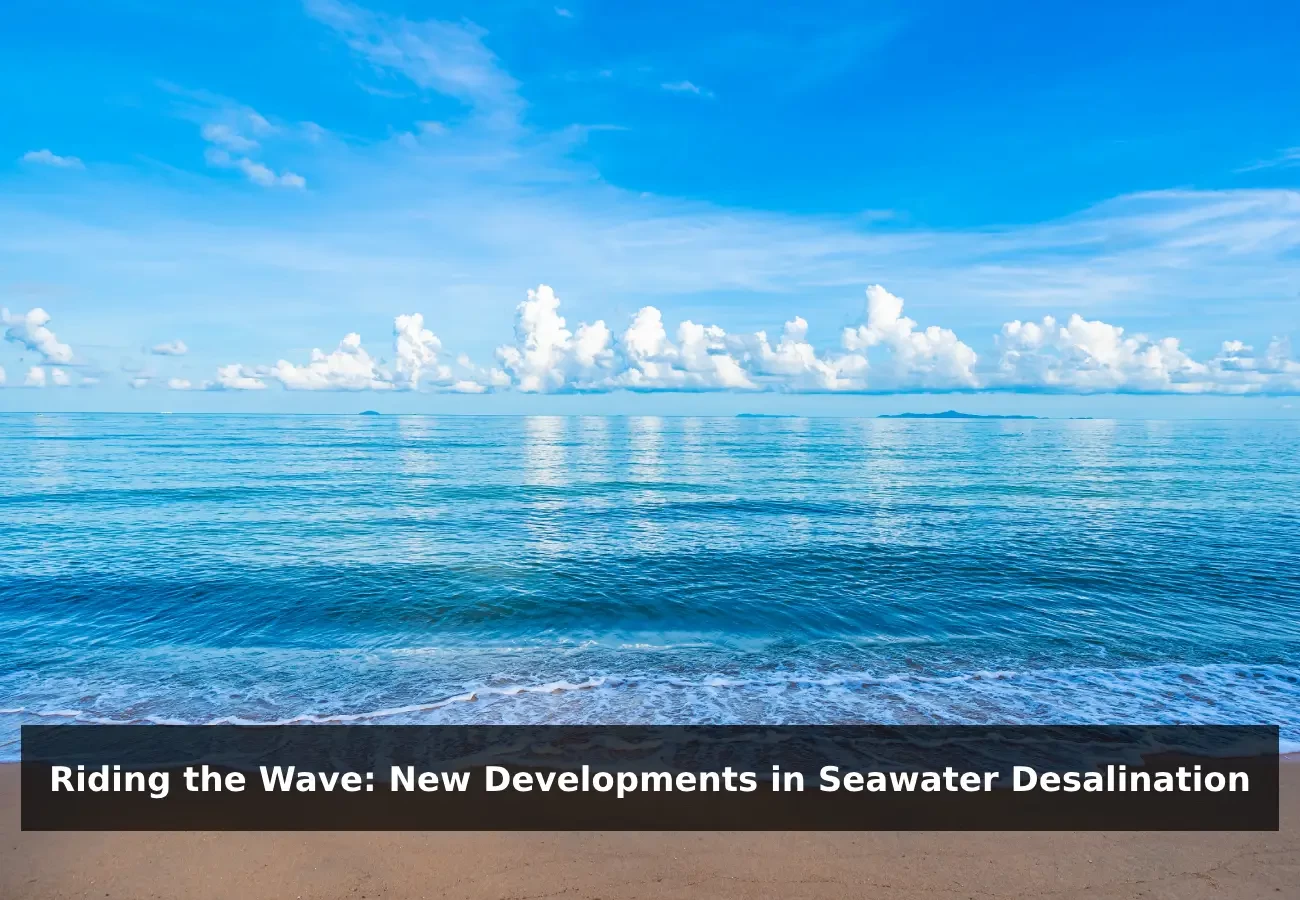Riding the Wave: New Developments in Seawater Desalination
The growing world population and increased industrialization are placing huge amounts of pressure on freshwater resources. Climate change with its unpredictable weather patterns of rain and prolonged periods of drought merely exacerbates the situation. Given these conditions, seawater desalination or the process of removing salt and other minerals from seawater in order to produce potable water is increasingly crucial. While it has been on the scene for decades, newer innovations are improving desalination to be less expensive, eco-friendly, and effective. Here's a rundown of the newer trends that are going to alter the landscape of seawater desalination in the years to come.
- Reverse Osmosis (RO) Enhancements
Reverse osmosis is currently the most prominent desalination technology, and advancement is ongoing towards pushing it forward.
- New Membrane Technology: The core of RO is the semi-permeable membrane. Scientists are creating new membrane materials with greater permeability and salt rejection capabilities. This means generating more freshwater and with less energy. Other nanomaterials and graphene are also being researched for the potential of making even more effective membranes. Biofouling, microorganism buildup on membranes, is a problem to be overcome. New surface modification and membrane coatings to resist biofouling are being made, minimizing maintenance and chemical cleaning.
- Energy Recovery Systems: RO is very energy-intensive to force seawater under pressure. New systems utilize energy recovery equipment such as pressure exchangers and turbochargers. These systems take the energy from the high-pressure brine reject stream and redirect it into the incoming seawater, cutting energy usage dramatically. This emphasis on energy conservation is critical to making desalination more environmentally friendly.
- Improved Pre-treatment: Efficient pre-treatment is crucial to prevent fouling and scaling of RO membranes. Newer filtration methods like ultrafiltration and nanofiltration are being incorporated into pre-treatment schemes. These technologies eliminate suspended particles, bacteria, and other impurities more efficiently, resulting in better membrane performance and lifespan.
- Hybrid Desalination Plants:
Blending various desalination technologies can provide synergistic advantages.
- Hybrid RO-MED (Multi-Effect Distillation) Desalination Hybrids: MED is a thermally powered desalination process. Hybrid RO-MED plants combine the advantages of both. While the majority of seawater can be treated by RO, MED will treat the highly concentrated brine reject of RO, with water recovery further increased and brine discharge reduced.
- RO-NF (Nanofiltration) Hybrids: NF can be used to remove particular ions, such as calcium and sulfate, which tend to create scaling in RO plants. Blending NF as a pre-treatment process will enhance RO efficiency and minimize chemical scaling inhibitors' usage.
- Renewable Energy Integration:
Decoupling desalination from fossil fuels is of importance for ensuring its long-term sustainability.
- Solar-Powered Desalination: Photovoltaic (PV) systems are being used more and more to power desalination plants. The decreasing cost of solar energy makes this an increasingly attractive option, particularly in sunny areas. Concentrated solar power (CSP) can also be employed to power thermal desalination processes.
- Wind-Powered Desalination: Wind power is yet another source of clean energy for desalination plants, particularly in coastal regions where winds are strong.
- Hybrid Renewable Energy Systems: Solar and wind power may be combined to offer a more consistent and stable energy supply for desalination, reducing the intermittency of a single renewable source.
- Brine Management and Resource Recovery:
The dense brine by-product of desalination is a problem for the environment. Emerging technology is appearing to dispose of brine less environmentally harmful.
- Brine Discharge and Dilution: Well-designed diffuser systems and outfalls can reduce the effect of brine discharge on the marine ecosystem by diluting the brine with the seawater quickly.
- Recovery of Raw Materials: Brine contains valuable minerals such as sodium chloride, magnesium, and lithium. There are technologies developing to recover these resources, and thus brine becomes a source of raw materials instead of being a waste product. This circular economy can render desalination economically efficient and more sustainable.
- Zero Liquid Discharge (ZLD): ZLD technology seeks to eliminate liquid discharge by concentrating the brine even further and recovering the salts as solids. Though ZLD may be energy demanding, it is attracting interest where the marine environment is sensitive.
- Small Community and Disaster Relief Desalination:
Module-sized, small-scale desalination systems are increasingly essential for delivering freshwater to isolated communities and in times of emergency.
- Containerized Desalination Units: Self-contained units are relatively simple to transport and install, and thus well suited to disaster relief and the delivery of freshwater to isolated islands or coastal towns.
- Decentralized Desalination Systems: Renewable-energy powered small-scale RO plants can be an economic solution for providing freshwater to off-grid communities.
- Automation and Digitalization:
The use of digital technologies is transforming desalination plant operations.
- Real-time Monitoring and Control: Data analytics and sensors are utilized to continuously monitor plant performance, optimize operating parameters, and detect potential issues in advance.
- Artificial Intelligence and Machine Learning: AI and machine learning algorithms can be employed to forecast membrane fouling, optimize chemical dosing, and enhance overall plant efficiency.
- Remote Operation and Maintenance: Digital platforms allow remote monitoring and control of desalination plants, minimizing the requirement for on-site staff and enhancing operational efficiency.
The Future of Desalination:
Seawater desalination has a promising future. Recent advances in membrane technology, energy recovery, integration of renewable power, and brine management are making seawater desalination more cost-effective, sustainable, and eco-friendly. With fresh water becoming ever scarcer globally, seawater desalination is going to supply clean and safe drinking water to all. All of these trends are opening the doors to a day when desalination will become a normal component of a viable water management approach. It must be noted that desalination is not alone. Conservation of water, the reuse of wastewater, and improved irrigation techniques all have an essential role in finding solutions to the world water issue.


